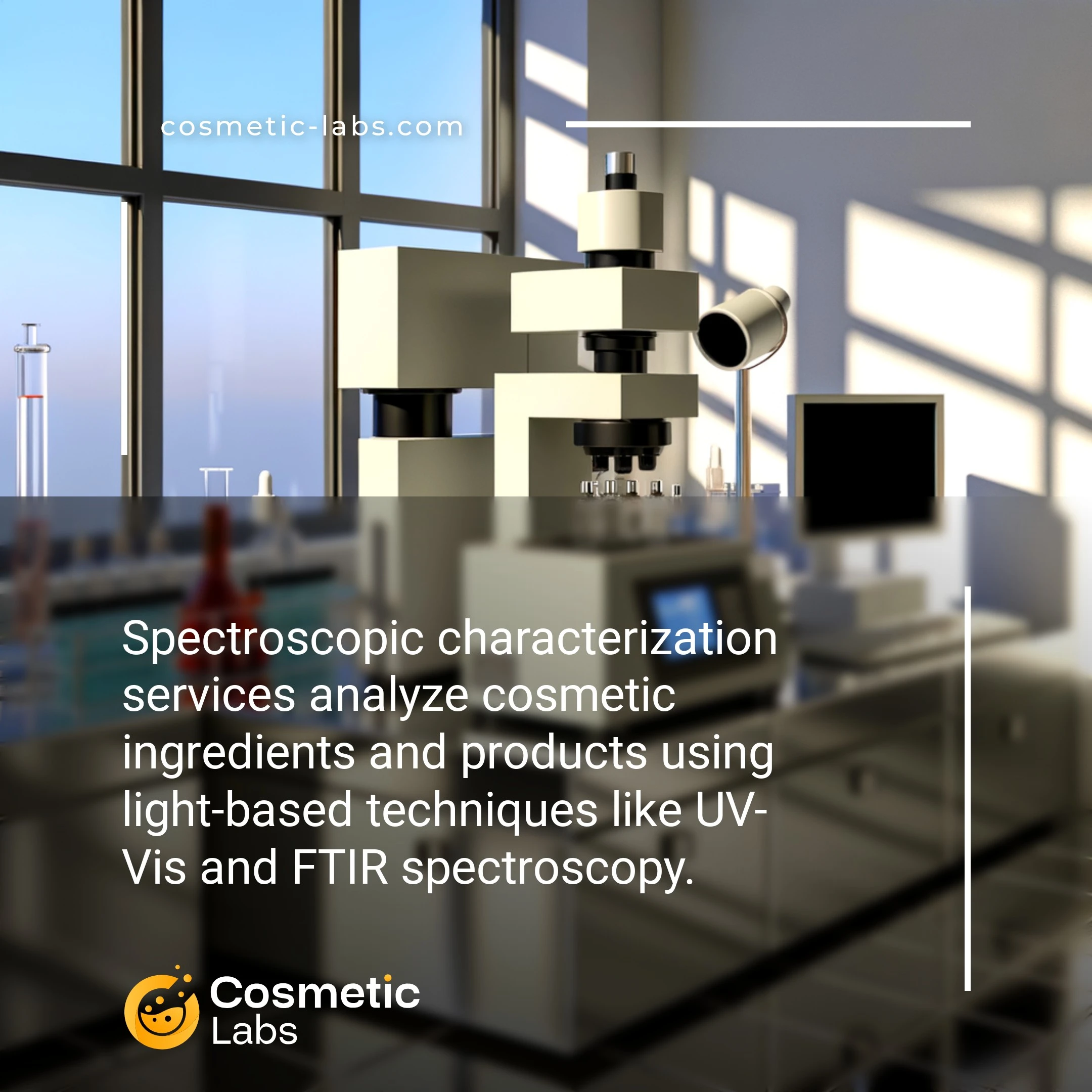Spectroscopic Characterization Services for Cosmetic Product Development

What is Spectroscopic characterization?
Spectroscopic characterization services analyze your cosmetic formulations at the molecular level using light-based techniques like UV-Vis, FTIR, and Raman spectroscopy. These tests identify ingredient purity, detect contaminants, and verify formulation stability—giving you precise chemical fingerprints that ensure product safety and quality before market launch.
Why do you need this service?
Cosmetic labs use spectroscopic characterization to verify ingredient purity and concentration in your formulations, catching contamination or degradation before production scales up. Partners on our platform apply UV-Vis, FTIR, and Raman spectroscopy to confirm your active ingredients match specifications, ensuring consistent product performance batch after batch.
Who provides Spectroscopic characterization services?
All cosmetic labs providing Spectroscopic characterization services
There is no company providing these services at the moment.
Spectroscopic Analysis for Cosmetic Products
Spectroscopic characterization gives you precise molecular insights into your cosmetic formulations. Labs on our platform use spectroscopy techniques to verify ingredient purity, detect contaminants, and confirm your product’s chemical structure matches specifications.
Core Spectroscopy Methods Available
Partner labs offer multiple spectroscopic approaches tailored to cosmetic analysis. FTIR spectroscopy identifies functional groups in your active ingredients and excipients. UV-Vis spectroscopy measures color stability and active compound concentrations.
Common applications include:
- Raw material fingerprinting and authentication
- Preservative concentration verification
- Sunscreen filter analysis (UV absorption profiles)
- Polymer identification in packaging materials
Labs typically complete spectroscopic analysis within 3-5 business days, providing detailed spectra and interpretation reports.
Advanced Characterization Options
For deeper molecular insights, facilities provide NMR spectroscopy and mass spectrometry services. These techniques reveal exact molecular structures of novel ingredients or help troubleshoot formulation issues.
Raman spectroscopy offers non-destructive testing directly through packaging—perfect for batch release testing. Labs also use fluorescence spectroscopy to track antioxidant degradation and vitamin stability over time.
Most labs bundle spectroscopic services with other characterization methods, creating cost-effective testing packages for complete product profiles.
Key Applications of Spectroscopic Analysis in Cosmetic Development
Spectroscopic techniques provide precise molecular fingerprints for cosmetic ingredients, enabling labs to verify raw material quality and detect contaminants before production begins.
Raw Material Authentication and Purity Testing
Labs use FTIR and Raman spectroscopy to confirm botanical extract identities within 24-48 hours. These methods detect adulterants at concentrations as low as 0.1%, protecting your brand from compromised ingredients.
UV-Vis spectroscopy measures active compound concentrations in vitamin serums and sunscreens. Testing one batch typically takes 2-4 hours and provides quantitative data for label claims.
| Spectroscopic Method | Common Applications | Detection Limits | Turnaround Time |
|---|---|---|---|
| FTIR | Polymer identification, oil authentication | 1-5% | Same day |
| UV-Vis | Sunscreen actives, preservative levels | 0.01% | 2-4 hours |
| Raman | Pigment analysis, crystal forms | 0.1% | 1-2 days |
| NMR | Structure verification, purity assessment | 0.5% | 3-5 days |
Stability Monitoring and Shelf-Life Prediction
Near-infrared (NIR) spectroscopy tracks moisture content and oxidation markers in real-time during accelerated aging studies. Labs monitor spectral changes at 40°C and 75% humidity to predict two-year shelf life within 12 weeks.
Fluorescence spectroscopy detects early-stage degradation in antioxidant formulas before visible color changes occur. This technique identifies vitamin C breakdown products at parts-per-million levels, helping you adjust preservative systems before launch.
